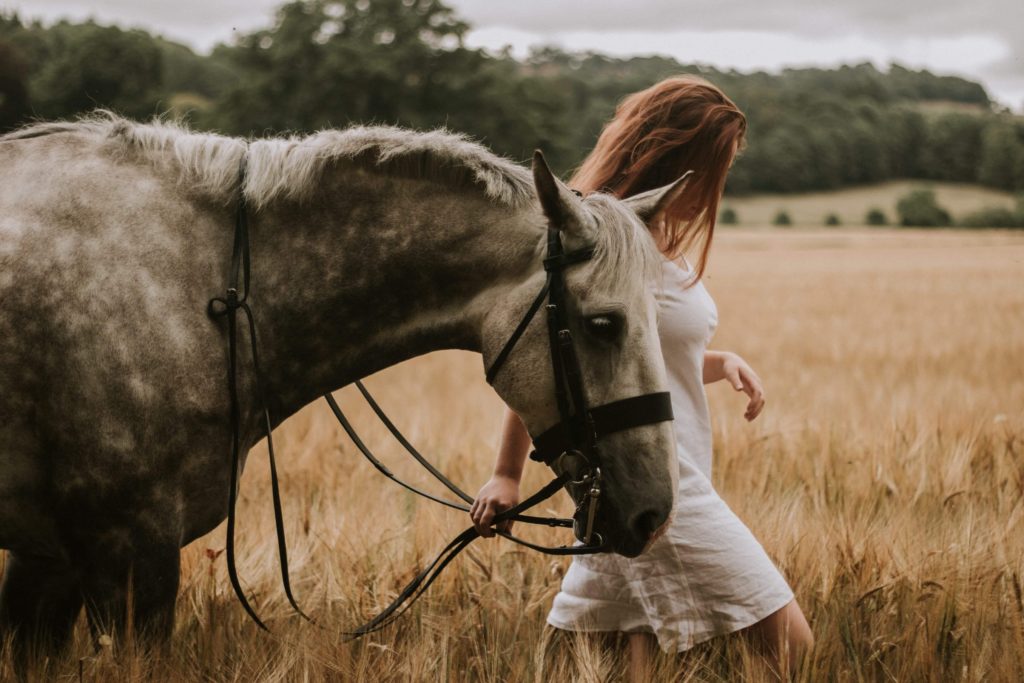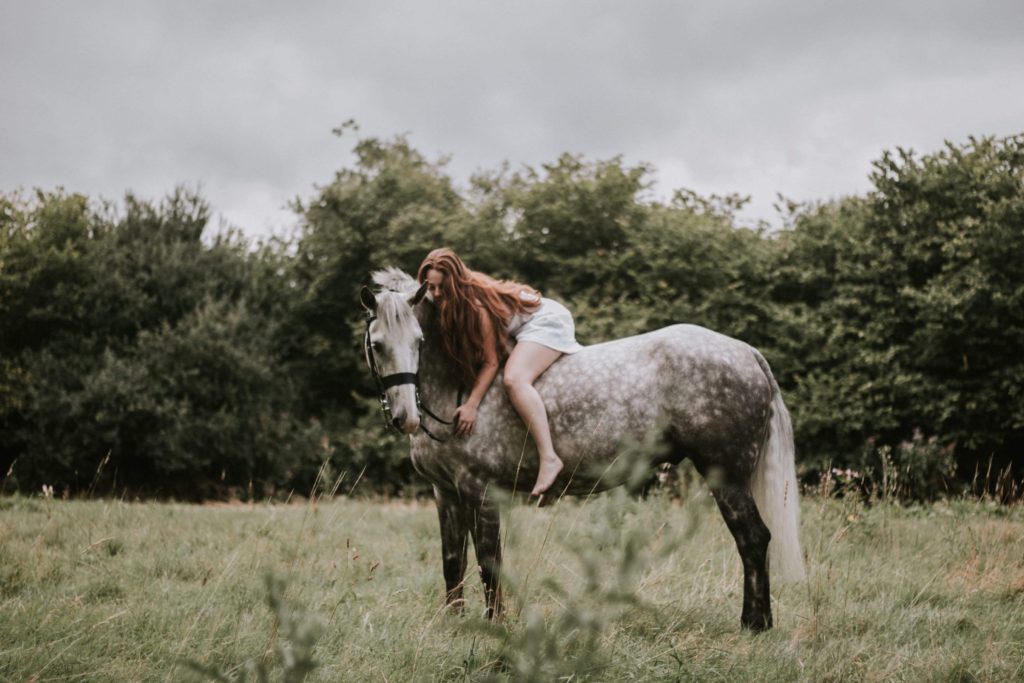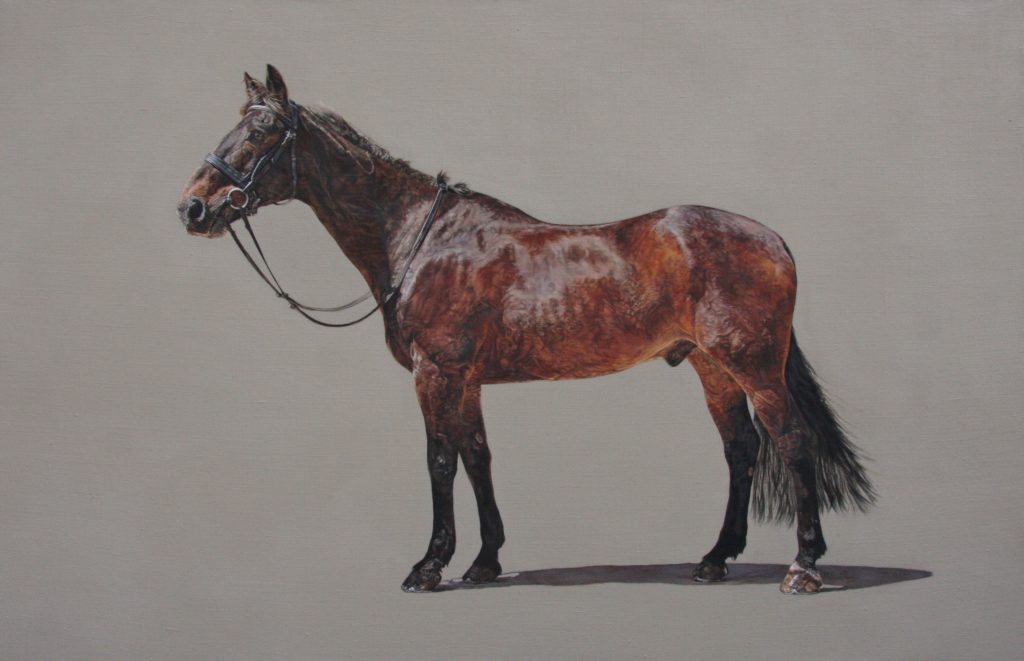Life as an Equestrian

I’d like to say that horses “run in the blood.” My late Grandfather was a Major in WWII and had a number of chargers. He loved horses, and as a keen equestrian participated in racing, polo and hunting. I think his proclivity for horses was passed to my mother, who even from an early age was “pony mad,” participated in many equestrian sports and owned a number of horses in her adulthood.
When my parents met my father took it upon himself to learn how to ride and to learn more about horses. Their passion for horses in turn affected me which led to my first sit on a pony at 3, riding lessons and then my very first pony (bought by my Grandmother) at 7.
When I first began to draw my attention was solely on horses, and an eagerness to get better at drawing horses. Meanwhile I was having riding lessons, having rallies with the Tanatside Hunt Pony Club and eventually moving on to High School, which was around the time I had a really good pony that taught me everything – lovely Cherry.
I had little interest in participating with art classes that didn’t involve drawing horses. By the time we got to GCSE there was more freedom to choose. Even though the topics during GCSE were “Figures Underwater” or “Covert and Obscure” I still managed to bring horses into my work (I am, and always have been, extremely stubborn!). I knew what I was passionate about and there was no way I could be persuaded otherwise. The pony I had at that time, Ebony, came into my work on a number of occasions. Including a friend’s horse, an Andalusian called Dio. I continued to persist with my interest in horses throughout A Level Art, eventually gaining an A* in both GCSE and A Level. It was during A Level that I really began focusing on artists George Stubbs (1724-1806) and Sir Alfred Munnings (1878-1959), artists who I related further to even more during university.
I gained a Merit Award for my first year at Aberystwyth University. I chose to study Fine Art and spent much of the first year experimenting with various methods of fine art, such as photography, ISP and printing. It wasn’t until the second year of university that I was able to finally bring forth my passion for horses. That was the point during our study that our tutors were loosening their hold on us and giving us more of a free rein on what we thought our path should take within the world of art. I knew early on what I was interested most in. Painting horses. Stubbs became a good friend of mine during those last 2 years of study in particular. My tutor often referred to me as “Mrs Stubbs” due to the very apparent influence he had on my work.

Rebel
Just before I began my second year of study my mother and I also bought another horse named Rebel, an Irish Draught dapple grey, into the family. Rebel joined me at Aberystwyth University during my last 2 years of study and inspired me to create some very important pieces, one of which was displayed at my Final Exhibition and gaining me a First-Class Honours Degree. Rebel came into my life at a time when I was really struggling. No one ever really talks about how hard it is to go to university. You’re suddenly left in a flat with people you don’t know, miles away from your family and suddenly all the friends you knew from school aren’t there either. I almost left university; but we got Rebel, found a livery yard I could keep him at, and I found a nicer place to live. Rebel meant I had something of home with me, he introduced me to a large group of people on the yard who I built good friendships with. He got me to feel inspired with my painting again, gave me a reason to get up in the morning and to go out and get some exercise and fresh air. I thrived at university. I truly believe, to this day, that I would not have a degree had it not been for Rebel.
Because of Rebel and the practices taught at university, I focused myself on life drawing more, doing sketches of Rebel whilst he was munching his hay and really coming to understand and focus on the anatomy of the horse. I came to really understand how horses moved, their form, how they react and how they think. It was at this point that I think my painting skills really, truly developed and I felt my paintings really came to life. Just running my hands over my horse’s form meant I had a better understanding of what went below the skin. Riding gives you a great understanding of horses too. Feeling how they move and how they react to touch and commands gives such an important insight into their nature and behaviour. I will endlessly be fascinated with horses. I think that it makes everything so much more incredible to have a focus on horses because I am always learning about them. After all, their form is different to our own and we don’t speak a common language. We have to try and understand them in a different way and that’s what makes them so captivating. For me, they will never be boring.

Pancake Times
I decided to continue my study at Aberystwyth and completed my Masters. By this point however, I was earning some good money doing my commissions, having also used my summer holidays to paint and earn some money. So I studied my Masters degree part time over 2 years and living at home. I was eventing Rebel, continuing my commissions, enhancing my skills as an artist and eventually creating my proudest piece to date. Reaching 42 x 65 inches, “Pancake Times” was sold as a commission before it was even displayed at the School of Art in Aberystwyth as my final piece. My tutors told me that what was so special about it was that it was “a painting of a horse, rather than a horse painting.” The focus is supposed to be on the mark making and manipulation of the paint, recognising that you’re bringing the horse to life using paint. Otherwise, it may just as well be a photograph. It’s important not to lose that I think. Paintings aren’t supposed to be recreations of a photograph. Or else, there’s no life to it, no part of the artist’s soul. It’s not about creating a pretty picture; it’s supposed to be raw and bring feelings to it. Something I hope that my paintings continue to convey in the years to come.